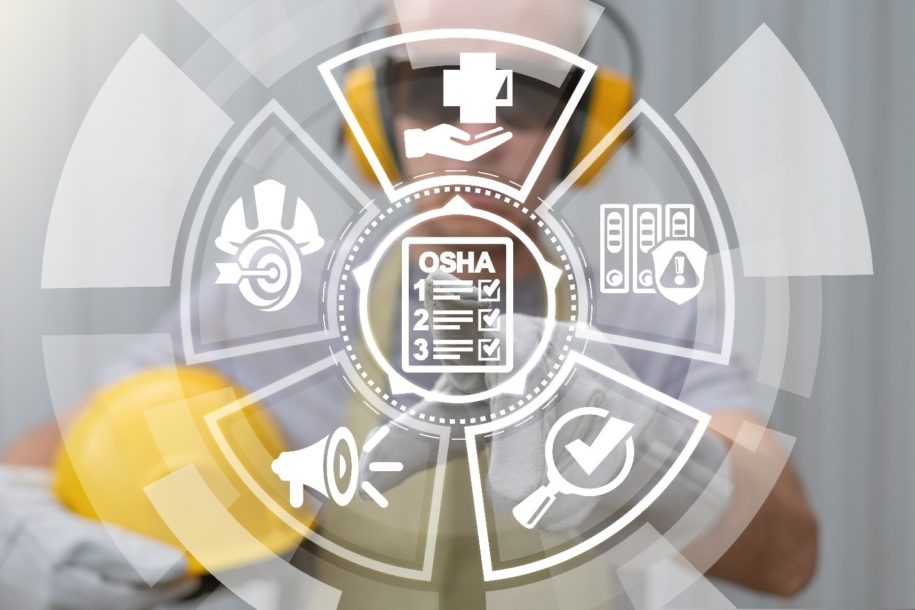A viable occupational health system is critical to creating a safe and healthy work environment. However, to be truly successful, an occupational health (OH) system needs to go beyond the status quo for safety management to encompass health and safety records, standards, and policies. Receiving regular feedback from an assembled joint health and safety committee and incorporating these policies and procedures into existing business processes are also essential steps. In this article, we’ll examine the major components of a successful occupational health system, highlight the main characteristics of such a system, and discover how the right tools can help create safer and healthier work environments.
The 4 Building Blocks of Occupational Health Systems
There are four essential components to any occupational health system.
- Policy tools – These tools make it easier to establish organization-wide health and safety measures and must be compliant with the various workplace health and safety regulations issued by the Occupational Safety and Health Administration (OSHA).
- Organizational tools – These tools allow occupational health and safety (OHS) professionals and senior leadership to define and delegate responsibility and accountability to all members of an organization.
- Planning and implementation tools – These tools ensure the seamless planning and deployment of an organization’s chosen health and safety policy measures.
- Evaluation tools – These tools allow the effectiveness of health and safety policy measures to be gauged and occupational health metrics to be tracked.
The following are characteristics that frame a dynamic and sustainable operational health system:
1. Commitment and guidance from senior leadership.
An organization’s senior leadership needs to demonstrate commitment to and cooperation with the implementation of the occupational health system. As the top-level business influencers, executives (management, board members, C-suite) are ultimately responsible for setting goals, approving new policies, and allocating resources to ensure success.
2. A proactive safety and health program.
By OSHA’s recommendation, a proactive approach to safety and health programs is the most effective. Proactive safety entails developing practices that identify and fix workplace hazards before they cause injury or illness.
3. Ongoing health and safety training.
To ensure that all workers are trained and empowered to perform their job duties safely, OHS managers must conduct regular health and safety training. Digital training tools can help all employees manage and fulfill all training-related activities.
4. OSHA-compliant incident investigations.
OSHA calls for employees to immediately investigate all incidents where workers were injured or suffered close calls (“near misses.”) Cutting-edge technology has made it easier than ever for users to capture data (whenever and wherever an incident may occur) for analysis and the prevention of future, repeat incidents.
5. Regular workplace inspections and observations.
To ensure safe and hazard-free workplaces, regular workplace inspections and observations need to be conducted. Once each inspection and observation has been completed, a report detailing the inspection details, a list of hazards, and the preventative/corrective action plan should be submitted to the senior leaders and OHS managers.
6. Feedback from a joint health and safety committee.
Forming a joint health and safety committee with representatives from all departments (including managers and rank-and-file employees) will help refine an organization’s OH system. During regular meetings, feedback can be submitted and discussed regarding the effectiveness of current safety policies. Having committee members from every department is important, as they can contribute from their variety of personal work experience to pinpoint previously unknown risks and hazards, resolve workplace health and safety issues, and make training recommendations.
Nearly all of these components that signify a dynamic, sustainable occupation health system can be positively affected by cloud-based, safety management software. Such a tool has features and capabilities that OHS professionals need to analyze and track their organization’s health and safety initiatives (including employee well-being programs). Through digitization, the processes of gathering and harnessing the data points that are needed to create accurate occupational health metrics and deploying health and safety initiatives are streamlined to be easily understandable and repeatable. When organizations can implement systems with the proper tools to make the job easier and full commitment from leadership, a healthier and safer work environment will be the result.
Author Bio
The SafetyStratus Research Advisory Group (RAG) brings together thought leaders from the global environmental, health, and safety community to promote best practices and provide key insights in the profession and the industries they serve. The Research Advisory Group also advocates, where practical, the intersection of and advances with the use of technology, such as the SafetyStratus enterprise EHS software platform. Group membership consists of representatives from across varied disciplines and market sectors as well as select members of the SafetyStratus team.
The primary objectives of the SafetyStratus RAG partnership are to:
- Build a strategic partnership between EHS practitioners and the SafetyStratus team.
- Provide engaging and practical content to the global EHS community.
- Provide discipline and market feedback specific to SafetyStratus products and services.
While the objectives of the RAG are varied, the primary public-facing outcome will be available through engaging and practical content found on the SafetyStratus resource pages. Various articles, papers, and other valuable resources will be produced and shared as part of an ongoing effort to cultivate a robust community. Ultimately, the SafetyStratus RAG will expand to have a broader reach and provide opportunities for more inclusion by all interested EHS professionals a collaborative community environment.


